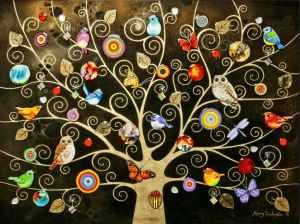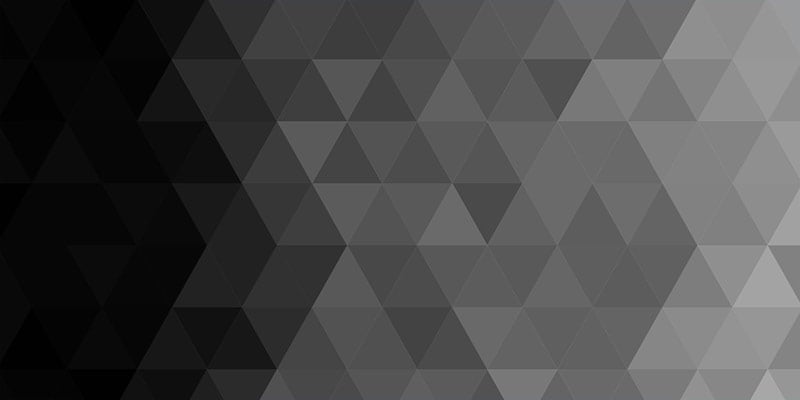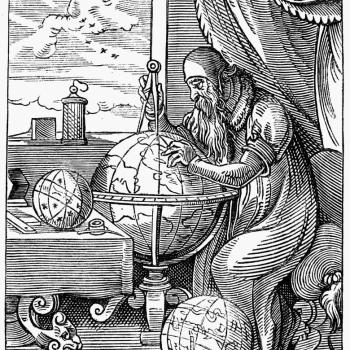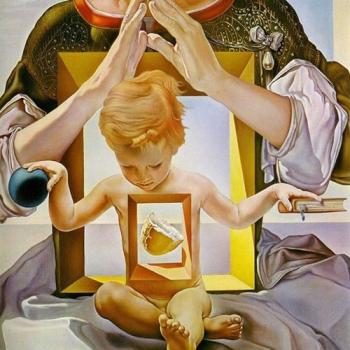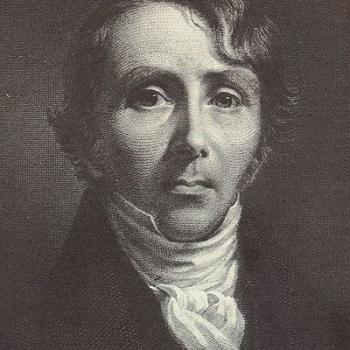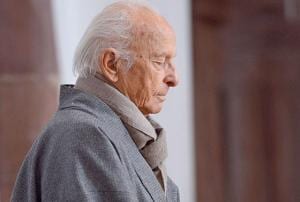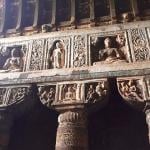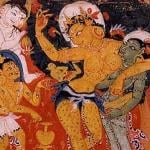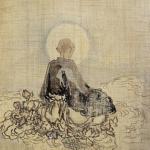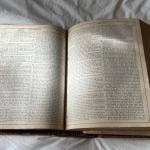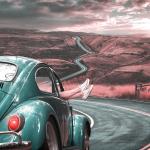OFFERING INCENSE:
REFLECTING ON MY JOURNEY BETWEEN
(This past Saturday I got up early, made coffee, and drove down to San Diego. I’d been invited by Leo Lefebure to join a panel sponsored by the Society for Buddhist Christian Studies which was being held at the American Academy of Religion’s conference. Thomas Cattoi presided, the panel included Duane Bidwell, Ruben Habito, Miriam Levering, and myself. Catherine Cornille provided a response inviting a period of discussion. I was the only non-academic, and the only person who didn’t especially see as my unique “between” as between Christianity and Buddhism. It was both a lot of fun and a rich opportunity for me to think about some things very important to my heart. Those who follow my blog more closely than makes sense will likely recognize the two principal illustrations I use in this reflection. I also realize this paper opens more questions, certainly for me, than it answers. But, then, that has a place, as well. I hope you find it helpful.)
Let me start with a small story.
A couple of years ago I was in Connecticut to co-lead a Zen retreat. As the retreat ended one of my co-leaders, Mary Gates, who is both a fully authorized Zen teacher and an Episcopal priest excused herself. Mary explained she had to say mass for the small congregation she served as vicar. Being me, I asked if I could tag along.
The service was held in a tiny stone chapel in West Cornwall. The town is a Norman Rockwell image of old New England. It even has a covered bridge. The chapel, well, built in New England or picked up and moved from some bucolic English countryside, it was picture perfect. There were eighteen of us in that little chapel, and we pretty much filled it.
The service itself was Prayer Book Rite II with all that means for those familiar with the history of Episcopalian religious services. For me as a progressive it’s filled with awkward masculine by preference language and as a Buddhist with a full-on dualistic God out there and you and me, down here theology. Not my cup of tea. And.
First, there were the people. I can’t read hearts with any clarity, certainly not by outward appearances. But it felt the full range of who we are as we come to church on intimate display Young people maybe there on their own, maybe just to make family happy. Older people, some quite elderly, where the actions of the pews came from decades of practice. Maybe done out of rote, but it looked more like well-traveled paths toward something. I’ll return to that. And a fair number in between, some probably happy to have a service that ends early in the morning. Others, well, hard to say. A large basket of life. Although it sure felt most everyone was fully present as they were. Sadness. Hope. Longing. Joy. You know, the human things. The things that we call religious, or, perhaps, today we might rather say spiritual.
And, here we are today. Not, I suspect, all that different.
And. I am profoundly honored to be invited to pause and reflect and from that to share my journey between the great spiritual traditions of East and West. I know this has been useful to me. I hope it will prove of some use to you, as well.
Like many of us here, I walk a path between. Of course, for each of us what that between looks like is a bit different. For many years I’ve spoken of my physiology of faith. I adapted it from an anecdote they tell about Erasmus. One Friday some friends came upon him eating a sausage. When chided he replied that while he did indeed have a Catholic heart, alas, he had a Lutheran stomach. I get it.
I like to say I have a Buddhist brain, a Christian heart, and a rationalist stomach.
That is that I find the basic Buddhist analysis maps the world I’ve experienced and points me on in critical ways. Specifically, I find the assertions that there is nothing permanent, that there is no abiding substance, that everything compounded exists in a tension that we has human beings experience as hurt or anxiety or suffering, and that there is a saving wisdom that puts all things to peace. I find these axiomatic, simply how I understand the world and everything in it.
However, the content of my dreams come out of my natal tradition, Christianity. I learned to read out of a King James Bible resting on my grandmother’s lap, after all. So, my dream world looks a lot like the Near East and is populated by Moses and Jesus, by Miriam and the Marys. I know them. They know me.
And it is all of it tied together through an essentially rationalist disposition. In my years as a Unitarian Universalist minister when encountering people from our hard-atheistic self-described “humanist” wing, I would like to say, “I’m more rational than you.” And, usually that was true.
So. A bit of a mess. And maybe a mess some here recognize. In trying to sort out what that means for me I find myself thinking of how not all that long ago, a Catholic priest and I exchanged messages about our shared interest in Zen.
He had formally “completed” Zen koan training and was authorized to teach within the Sanbo Zen lineage. Sanbo Zen is a lay organization that arose at the beginning of the Twentieth century and, while rooted in the Soto tradition transmits a Rinzai-influenced koan meditation practice. As I suspect many here know.
Of course, masters of koan practice are by definition “Zen masters.” And so, this Christian priest, like my friend the Episcopal priest was a Zen master. I am also dually credentialed, as a Soto Zen Buddhist priest as well as a Unitarian Universalist minister. He, as well as my Episcopal priest friend, and I all occupy a liminal space between something and something else. That “between.” That path between.
I guess it shouldn’t have surprised me when out of the blue he asked, “So, what is your theology?” My theology. And “theology,” I noticed rather than “What do you believe.” To that question, in that moment, without actually thinking about it I said, “I’m a liberal Buddhist.”
When I do think about it, I normally try to avoid “liberal.” It’s such a freighted term in our time and place. And, indeed, he paused. Then he said how he was confused that a political position would be collapsed into a religious term. Being naturally pedantic, I replied how “liberal religion” is a term of art, which dates back several hundred years. Another term that overlaps in meaning is “religious modernism,” although that has until fairly recently usually been reserved for a specific movement within Catholicism, and among some Anglicans.
I launched into my “elevator speech” about liberal religion. The liberal of liberal religion has a this-worldly and rationalist bias as it engages the ancient traditions we’ve received as our religions.
Now, I’m perhaps enriching the term here, But also, and this is very important, equally important to that naturalistic bias. At least in the sense I use it liberal religion implicitly embraces intuitive insights as equally valid ways of knowing. In that sense perhaps post modern, or post post modern. I get confused about these things.
For me, at least, liberal religion encompasses a full-on embrace of wonder and a suspicion of any reductionist assertions. This, of course, places my spirituality at a somewhat different point on the line of modernist Buddhisms.
The priest grumbled a bit about Protestants. But mostly in good spirits, I thought. I decided at that time it would be too complicated to explain that I don’t actually consider myself a Protestant, either. We moved on to other subjects.
But here, just a tiny bit more unpacking about that line of modernist Buddhisms. First modernism and liberal religion. I think a great deal of the attention given to modernist approaches to Buddhism specifically has been toward the adaptation of Buddhist practices and to a lesser degree, Buddhist principles into contemporary secular culture. And, that’s certainly a worthy subject.
I would add the full range of what might be encompassed in the term “modernist Buddhism” or “Buddhist modernism” does include what I’m calling liberal religion. If full on orthodoxy is the right of a continuum and secular Buddhism is the far left, I suggest liberal Buddhism as an expression of liberal religion fits near the middle. Looking at what is occurring is another worthy subject.
Liberal religion arises within the European Enlightenment. The term stands for currents within Christianity. Liberal religion also exists in Judaism and Islam. It also has influenced many Eastern religions. Most of all it has touched Zen and some Pure Land traditions, especially in their Japanese forms.
I believe liberal religion is more a style or approach to religion than anything else. It has identifiable characteristics. The approach is broadly this-worldly, rationally inclined, has a naturalistic, usually monistic mystical side, is broadly universalist and sometimes syncretistic. As such maybe the idea of a continuum doesn’t quite work, where liberal Buddhism might represent, as I said a bit ago, a post-modern, or even post-post-modern modernism…
I find this liberal perspective a current not unlike Gnosticism in the Ancient Near East or Tantra in the Ancient Indian Sub-continent. It can exist by itself as in contemporary Unitarian Universalism, where religious liberalism is not attached to a specific tradition. Mostly it incorporates as a particular approach within a larger spiritual tradition, like the liberalism of contemporary Anglicanism. And it can and is becoming a school of Buddhism. Or, more properly it appears to be informing several emerging schools of Buddhism.
It’s also important to note how liberal religion really annoys a lot of people. From several different angles. So-called “true believers,” those who hold fundamentalist or simply exclusivist views of their religion despise religious liberals. Heretics, after all, are pretty much always hated more than infidels. And, interestingly the contemporary atheist community, at least at the polemical end, usually do not like religious liberals. Probably as the balance of their arguments against religion are based upon the most fundamentalist versions of particular faiths. They will even go so far as to assert with the fundamentalists how liberal versions of a given religion are not the true versions. Irony dancing with irony…
So, how does this come together for me? And for us?
We seem to have within the structures of our brains an ability to see to things at the same time. One, that we are different and distinct and acting in our own interests. And, two, we exist within an intimacy so profound it is fair to call it one. Although I think in some ways that “one” is one too many. The play of existence is more complicated than even that most lovely of reductions.
Over the last couple of years, I’ve found a shifting in my interior life. As a Zen practitioner I’ve been focused for many years on the profound and subtle pointing expressed succinctly within the Heart Sutra: Form is emptiness. Emptiness is form. It is an approach to that religious perspective generally tagged as nondual. And I believe it contains the great secret of our lives, our past, our future.
Within Zen we find a perspective somewhat different than in other nondual traditions. And we find it within that expression of an exact identity of form and emptiness, of our lives in this world and some profoundly inseparable, wild, and ultimately unnamable openness. This, I’ve found, is enormously important.
Fronting these twin truths has been the project of my life. My principal tools have been zazen, just sitting, and koan introspection. Other things as well, especially in past and now recent years exploring the rhythms of life as a Zen priest. And, of course, there have been the eruptions of the heart that have further directed my life. Whether they’re the product of those practices, I cannot say. But, they feel connected.
So, that said, the shift. It comes out of something that is also captured within the Mahayana expression of the Buddhist way, the Three Bodies. One is Nirmanakaya, the realm of history and causality. Another is the Dharmakaya, the realm of the absolute or vast emptiness. And, the third is the Sambkogakaya, the realm of miracle. Or, as I see it the realm of dream and story.
In this third place the absolute and the phenomenal meet, and there are eruptions, perhaps disruptions of time and space, but absolutely disruptions of our sense of what is. For me those disruptions manifest as a decentering of my ego, the sense of self I call “me.” My practices and companions for these many years have opened this third place – and it is increasingly where I find I’m living.
Sambkogakaya is the decentered place. It is the post, or even the post-post of modernist Buddhisms and an invitation into the mysteries of the holy.
Not crushing or destroying our egos, an impossible task without also killing the body. Instead, decentering. Decentering my ego, allowing that impermanent product of causes and conditions its existence in the moment, and its importance; its place without trying to hold onto any moment of it as it goes about its business of encounter, rising, and, and, falling.
I practice as a Zen Buddhist, if, perhaps, of a liberal and rational sort. And, I find much of my inner experience is populated by the stuff of Christianity. More than I would have thought given, well, how I understand the world. And, yes, there is that rational thing, too. This is my little corner of the great buzz that is the world and my heart in motion. All of it experienced as I experience it.
With this, back to that mass in that little Episcopal chapel in West Cornwall, Connecticut, on the eastern side of the North American continent, on a small planet spinning around a middling star at the edge of one of a million million galaxies. As the service worked its way through the story of Jesus and his disciples gathered at their meal. Finally, the consecrated bread and wine were offered to all who were present. Me, I’ve been to many Episcopal services over the years. Episcopalians are without a doubt my favorite Christians. But, I never take communion. As lovely as that tradition is, I always felt just enough of a separation that partaking in that most intimate part of the service never felt appropriate. Not respectful. Not right.
This time was different. Maybe in some degree it was my relationship with the priest. But that hardly would be enough. Something else happened in that little stone chapel. I saw. I noticed. The whole universe was present. All the angels of Western faith and all the devas of the East were present and circling around that little altar that somehow became the navel of the cosmos. And without thinking about it, without worry about theology or proper decorum, without any concern but a longing to come ever closer to the moment of creation, I stepped into that small circle. And I received communion.
This is not the only time I’ve had such a sense of invitation. I can offer a number of examples. But, I’m a Zen teacher. So, when we retired and Jan and I returned home to Southern California a mutual friend made sure I met a local Japanese Zen priest, the Reverend Gyokei Yokoyama. He leads a Japanese-American congregation in Long Beach where he conducts services and preaches sermons and tends to the pastoral needs of the people he serves. As I noted mostly Japanese Americans. In addition to his ministerial duties he leads a Zen meditation group several mornings a week. Sadly, few in the congregation are interested in meditation. And his little group are mostly converts, mostly in the moment at least of European descent.
And. While I am responsible for my own Zen group, I love going to the morning sits he leads. I love it for a couple of reasons. One, I’m not in charge. I get to, as we say in the Zen way, just sit. And over these past couple of years I’ve come to love that early morning schedule. The way the light comes up from the darkness as we begin, the mix of smells, particularly the slight hint of mildew mixed with sandalwood incense that instantly returns me to my youth sitting at the old Berkeley Zendo where I first began my practice many, many years ago. It is delicious.
But the main reason I’m doing this is that I have committed myself to trying to relearn the sacramental functions of a Soto Zen priest. I first learned them pushing on fifty years ago. But after my time in the monastery I ended up practicing with a koan teacher who was not a priest, and well, that part of my Zen life more or less fell away. In my dotage I’m on a path of integration and a part of that is more fully understanding the priestly part of my path.
I’ve found this in some ways just relearning to bow. Never a bad thing. Not a bad thing for any of us. And, so, Wednesday and Friday mornings, I at least figuratively put on the black robe of a novice priest, sit a bit, and then try to master the liturgical ropes presented by a kind and generous teacher.
One day, not long ago, I found myself standing near the altar as the sensei approached the altar. The form is closely prescribed. Every motion has a thousand years of practice behind it, within it, as it. He walked up with his hands folded at his chest, as he stepped to the altar itself, he put his hands together palm to palm. He picked up a waiting stick of incense and held it to his forehead, bowing slightly.
And, I realized in that moment as Gyokei offered that incense for the world it was the same moment as when Mary held up the chalice in an offering for the world. The truth has always been there. Hidden in plain sight. In between. In the midst. Decentering and discovering our true heart.
Just this. And with that the healing of our hearts.
And with that the healing of the world.


